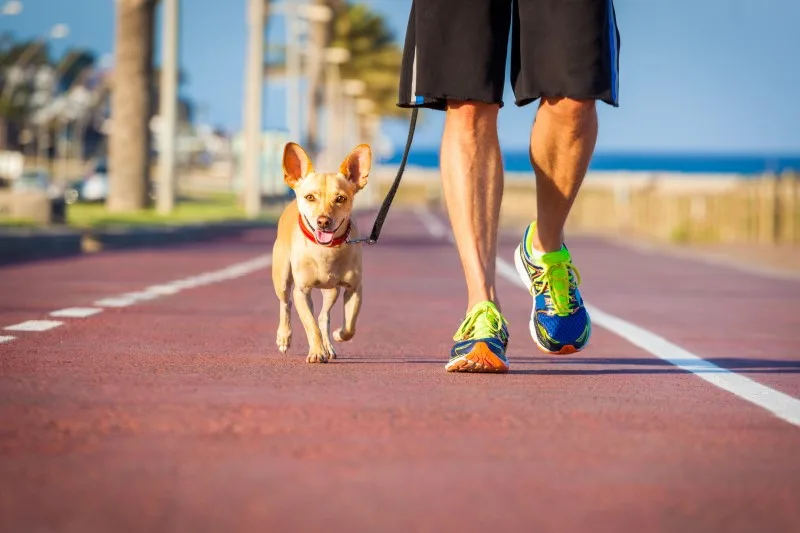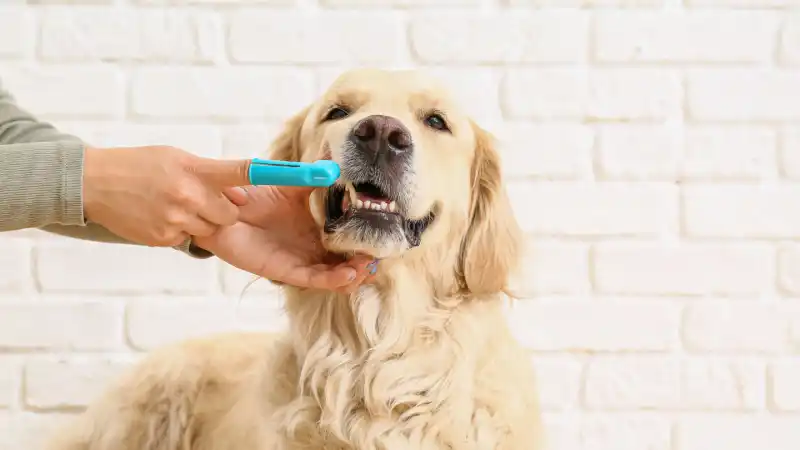6 Tips for Running with Your Dog
Wanna run with your dog? Here are 6 tips for keeping it safe, ranging from getting the right gear to watching the weather and starting a regular routine.

Running can be a great form of exercise for both you and your dog. Not only does it provide the perfect opportunity to spend time together, but having a partner can help keep you motivated to stay healthy and active.
But before you run with your dog, it's important to be prepared. Running is a strenuous activity that isn't a good fit for all dogs, and it's not the type of exercise that you can jump right into without training.
Read on to learn whether your dog would make a good running partner, and how to successfully start running with your four-legged friend.
Should Your Dog Run with You?
While you may be excited to incorporate your best friend into your running routine, not all dogs make good running partners. And it's important to consider your dog's breed and health to make sure it's safe for them to run with you.
Your dog's breed can play an important role in whether running is safe for them. Brachycephalic dogs, for example, have airway abnormalities that can make it difficult for them to breathe during intense exercise – especially on warm days. These dogs include Pugs, Boxers, Bulldogs, and Boston Terriers.
In contrast, some dog breeds make great runners. The following breeds are naturally active, high-energy dogs that may be great candidates for a running partner:
Dalmatian
Vizsla
German Shorthaired Pointer
Rhodesian Ridgeback
English Springer Spaniel
Belgian Malinois
Your dog's age is also important to consider. As a puppy, your dog's growth plates are still forming. Running can put pressure on these plates, causing injuries that can affect your dog for the rest of their life.
Before you start running with your dog, make a checkup appointment with your vet. They will have a better understanding of your dog's health and whether running will be a good form of exercise for them.
6 Tips to Start Running with Your Dog
If you've decided that running with your dog is a good idea, there are a few things you need to do before you hit the pavement. Here are our top tips for starting to run with your dog:
1. Get the Right Gear
Before you start running with your pup, you need to equip yourself with the right gear to keep you and your dog safe and prepared. Some equipment that you'll need includes:
A hands-free leash
A well-fitting harness
A water bottle, collapsible water bowl, and plenty of fresh water
Portable first-aid kit
Treats
Poop bags
Reflective gear, such as a reflective vest or light-up collar, for night running
2. Take Training Slow
Just like your own running journey, your dog needs to train to build up to long-distance runs. Depending on your dog's current health level and exercise experience, this may mean walking the majority of the time at first.
Start by adding jogging to your dog's regular walk, but only on occasion and for brief periods of time. As they get used to running in these small segments, you can increase the duration of the run until they can run the full time.
Give your dog plenty of breaks, and watch their body language for signs of exhaustion, discomfort, or painful joints. If at any point your dog shows resistance to running, stop training immediately.
3. Watch the Weather
While you may be comfortable running in the rain, snow, or heat, your dog may not be able to handle those conditions as well. Before going out for a run, always check the weather conditions so you can prepare accordingly.
For dog breeds with thick, warm fur coats, running in high temperatures can be dangerous. Breeds like Siberian Huskies may need extra water breaks and time to cool off during runs in the summer, and they may prefer a different form of exercise if the temperatures reach too high.
In contrast, running in the winter can be too much for many breeds, especially short-haired dogs that can't tolerate cold temperatures. While a Siberian Husky may thrive in this weather, a short-haired breed may prefer to stay inside.
Cold weather also presents a risk for your dog's paws, so it's important to take the proper precautions before you head outside.
4. Protect Your Dog's Paws
Your dog's paws are sensitive, and the terrain that you run on can affect them. The softer the ground, the better for your dog's paws and joints. For example, running on asphalt can be tougher on your dog's paw pads than running on sand.
The weather also affects your dog's paws. High temperatures can cause asphalt and concrete to heat up, putting your dog's paw pads in danger of burns. In the winter, cold temperatures, as well as salt and ice-melting chemicals, can also put your dog's paws in danger.
To help protect your pup's paws, consider buying boots for your dog or applying paw wax before your run.
5. Create a Running Routine
Like everything in your dog's life, creating a routine around running can make the process more enjoyable for you both. Run at the same times throughout the week and follow a familiar path each time. This helps to build your dog's confidence and can reduce on-leash distractions.
Using designated equipment for your runs, like a special harness that isn't used during your regular walks, can also be a great way to get your dog excited for their run and get them in the mindset to exercise.
6. Give Your Dog Breaks
While you may want to push through and keep running, it's essential to keep your dog's health and safety top of mind by taking frequent breaks. This will allow them time to rest, cool off, and stay hydrated.
When it comes to exercise, drinking small amounts of water several times is better than drinking lots of water in one go. If your pup laps up too much water too quickly, they may vomit. Taking frequent short breaks will keep your dog hydrated and prevent them from drinking too much water at once.
These breaks are also good opportunities for your dog to sniff. Even though the primary goal on these runs is exercise, dogs are naturally curious, and sniffing can help keep your pup calm and make running more enjoyable.
Are You Ready to Run with Your Dog?
Check with your veterinarian before you make any changes to your dog's exercise routine, and always take training slowly. With the right gear and a good training plan in place, you and your dog can be an unstoppable running team!
Pet insurance can help pay for unexpected vet bills. Get a pet insurance quote from AKC Pet Insurance today (underwritten by Independence American Insurance Company) and prepare for accidents, illnesses, and much more.

Richard has shared his life with pets since childhood, and currently has a rescue cat and dog. He works with veterinarians and pet businesses to improve their content. To find out more, please visit his [website](https://richardrowlands.com/).
READ MORE ARTICLES

